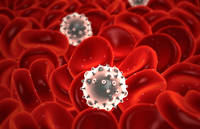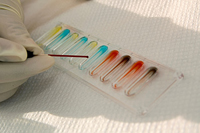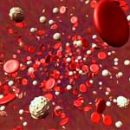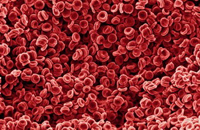Leukocytes are a concept that combines not one type of blood cells, but five, and each of them has its own purpose. Reducing the number of leukocytes leads to leukopenia, but it can manifest itself differently, depending on which cells in your blood has become less.
Content
 Leukopenia is expressed in the insufficiency of granulocytes or lymphocytes.
Leukopenia is expressed in the insufficiency of granulocytes or lymphocytes.Reducing the number of granulocytes can be observed at any age and lead to infectious diseases and inflammatory processes in the throat, digestive tract, to the affix of mucous membranes and leather.
Reducing the number of lymphocytes, which are formed mainly in the lymph nodes, is rare.
When the content of blood leukocytes in the blood drops to a dangerous level, the body becomes defenseless against infections. The forecast depends on the reason that caused the decrease in the number of leukocytes, and the possibility of its elimination.
Such reasons can be attributed (leukopenia often develops as a complication in certain diseases):
- Infection;
- Sepsis;
- Viral and fungal infections;
- Propy infection (lightning three-day malaria).
Gynecological complications
- Amniotic embolism;
- Pairing placenta;
- Unrequired dead fruit;
- Sepsis, developed as a result of an abortion;
- Eclampsia.
Oncological diseases
- Acute leukemia;
- Cancer in the distribution stage.
Diseases causing necrosis (samples) of fabrics
- Extensive burns and damage;
- Destruction (violation of the structure) of brain tissues;
- Transplant rejection;
- Necrosis of the liver.
Other reasons
- Attack of angina;
- Shock;
- Snakebite;
- Cirrhosis of the liver;
- Fat embolism;
- Transfusion of incompatible blood;
- Heart failure;
- Surgical operation using artificial blood circulation;
- Hemorrhagic cyst;
- Dangerous Trombus in Vienna.
 Blood contains five types of leukocytes, the purpose of which is to protect the body from bacteria. All types of leukocytes are divided into two categories: granulocytes and agranulocytes.
Blood contains five types of leukocytes, the purpose of which is to protect the body from bacteria. All types of leukocytes are divided into two categories: granulocytes and agranulocytes.
Granulocytes
For cytoplasm (cellular substance) of these leukocytes, a graininess is characteristic. Three types of granulocytes are distinguished: basophiles, neutrophils and eosinophilic.
Low granulocyte content can be called by the following reasons:
- radiation therapy or anti-cancer drugs;
- increased sensitivity to certain antibiotics and cardiac means;
- a number of diseases (for example, anemia, bone marrow cancer, some hereditary diseases, infectious mononucleosis, viral and bacterial infections);
- Capture of blood cells by spleen.
Agranulocytes
In the cytoplasm of these leukocytes there is no grain. Two types of agranulocytes distinguish: lymphocytes and monocytes.
Causes of low lymphocyte content:
- genetic anomalies;
- radiation therapy or anticancer drugs;
- dysfunction of intestinal lymphatic vessels;
- an excess of steroid hormones caused by the use of adrenocorticotropic hormone or steroids, stress or stagnant heart failure;
- Serious diseases (for example, Hodgkin's disease, leukemia, aplastic anemia, sarcoidosis, miastic, lupus, protein deficiency in diet, renal failure, cancer and tuberculosis).
Low lymphocyte content is characterized by swelling glands, increasing the spleen, increasing the tonsils, as well as symptoms of the associated diseases.
Treatment is aimed at eliminating or correction of the root cause, which led to a decrease in the content of leukocytes, so the doctor must establish and, if possible, eliminate the cause of the violation, as well as to slow down the dissemination of infection. Many patients cancel medication and radiation therapy and begin treatment with antibiotics even before obtaining the results of many analyzes. Antifungal drugs can be assigned. Recently, drugs are used that stimulate the production of neutrophil bone marrow. Usually within 1-3 weeks, the bone marrow spontaneously renews the production of leukocytes.









